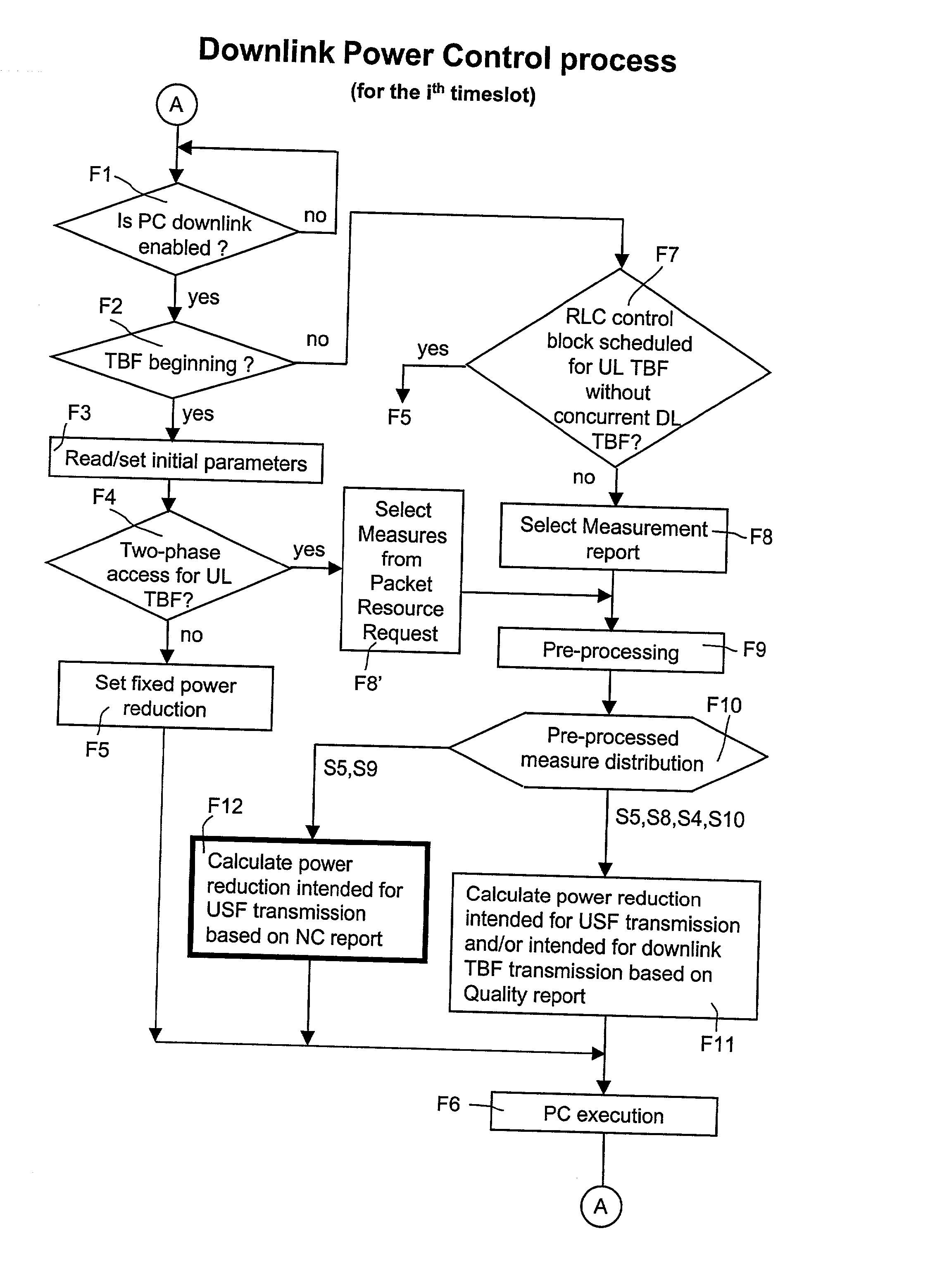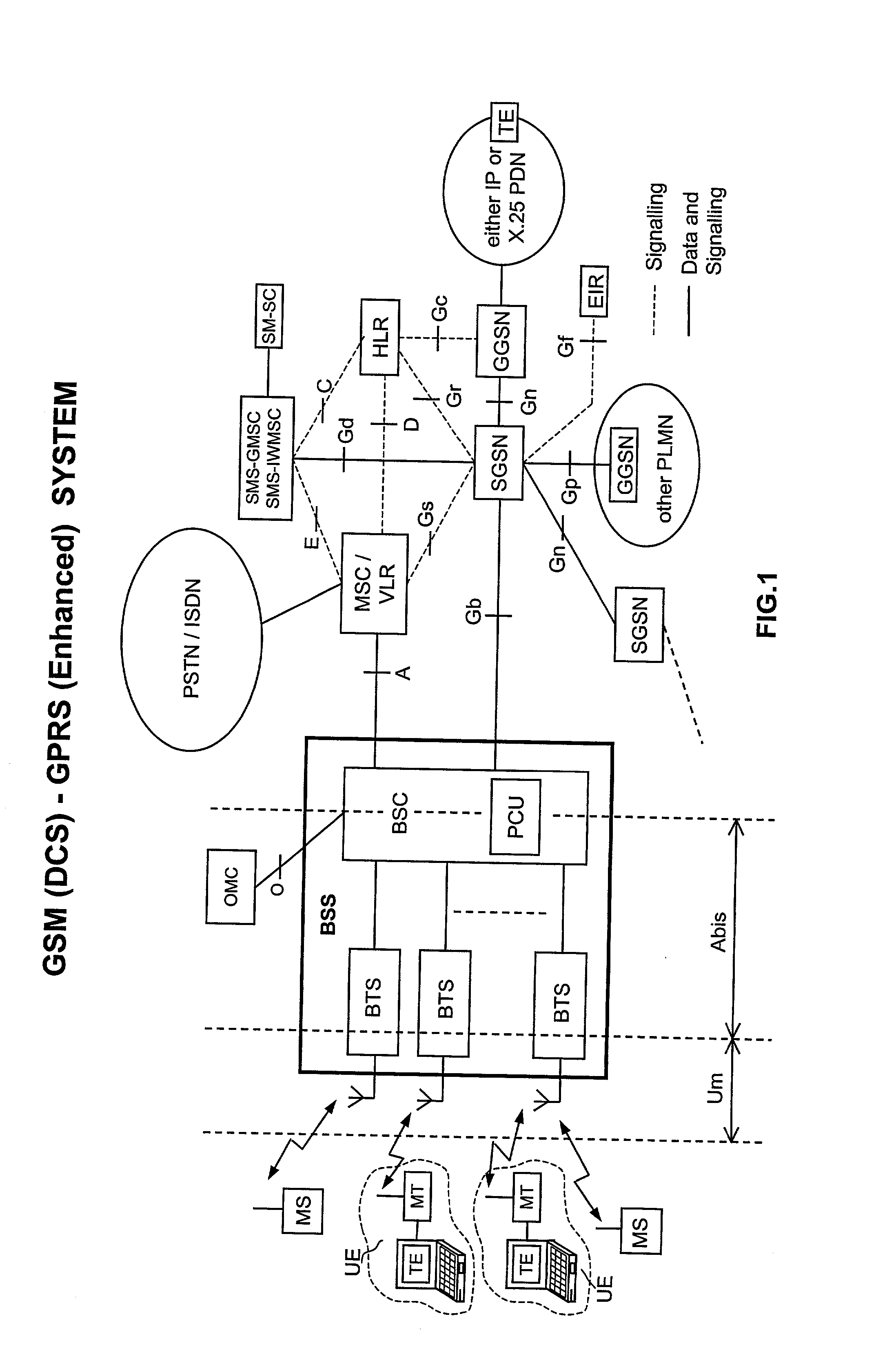Method to perform downlink power control in packet switching cellular systems with dynamic allocation of the RF channel
a packet switching cellular system and power control technology, applied in the direction of power management, sustainable buildings, wireless communication, etc., can solve the problems of not always assured, outlined problems arise for mobile stations with an uplink tbf, and problems in the performance of downlink power control
- Summary
- Abstract
- Description
- Claims
- Application Information
AI Technical Summary
Benefits of technology
Problems solved by technology
Method used
Image
Examples
Embodiment Construction
[0051] FIGS. 1, 2, 3a, 3b and 4 have already been duly discussed above.
[0052] FIG. 5 shows a block diagram of a Base Transceiver Station (BTS) which takes part in the present invention by performing a more reliable transmission of the USF flag. The BTS station of FIG. 5 includes a TRANSMITTING SECTION and a RECEIVING SECTION both controlled through a BTS CONTROL PROCESSOR & RAM block, which further controls a Frequency Synthesizer & Hopping unit common to the two sections. The two Sections and the BTS CONTROL PROCESSOR & RAM block are connected to an A-Bis INTERFACE functional block for receiving / outputting one or more 2 Mb / s PCM link carrying PCU frames incoming from, or outgoing to, the BSC block (FIG. 1). A BRANCHING UNIT placed between the antenna and the two BTS sections includes a Duplexer filter which conveys to the antenna the global RF output signal of the TRANSMITTING SECTION, and to the input of the RECEIVING SECTION the wide band RF signal received on the antenna. The BR...
PUM
 Login to View More
Login to View More Abstract
Description
Claims
Application Information
 Login to View More
Login to View More - R&D
- Intellectual Property
- Life Sciences
- Materials
- Tech Scout
- Unparalleled Data Quality
- Higher Quality Content
- 60% Fewer Hallucinations
Browse by: Latest US Patents, China's latest patents, Technical Efficacy Thesaurus, Application Domain, Technology Topic, Popular Technical Reports.
© 2025 PatSnap. All rights reserved.Legal|Privacy policy|Modern Slavery Act Transparency Statement|Sitemap|About US| Contact US: help@patsnap.com



